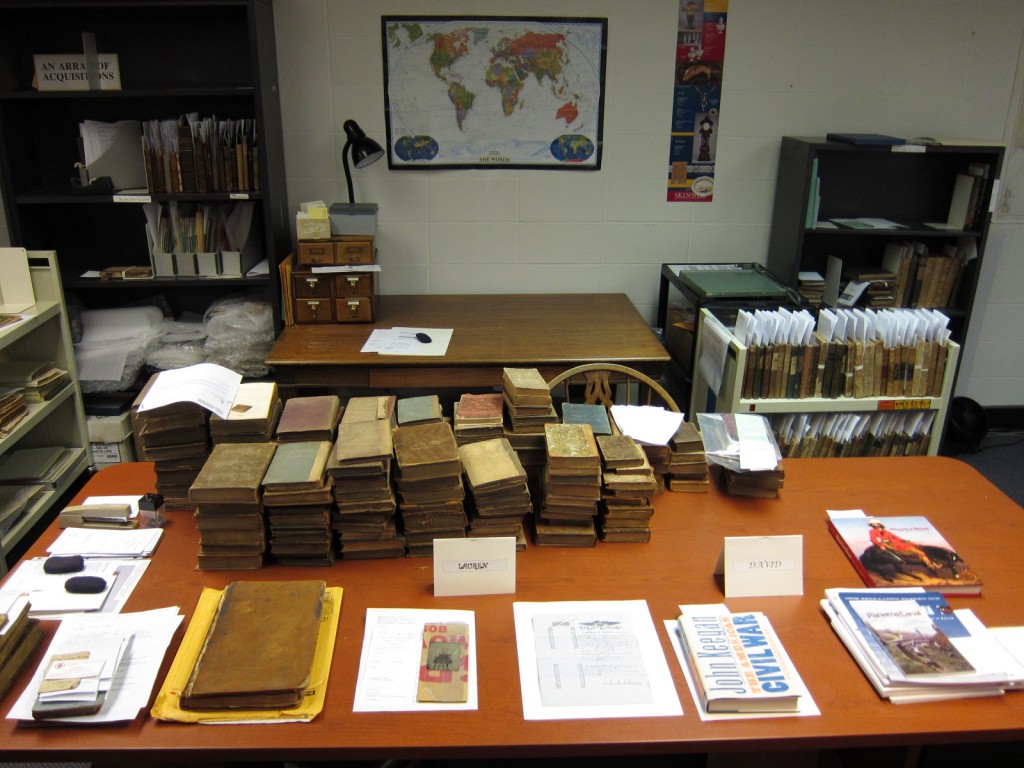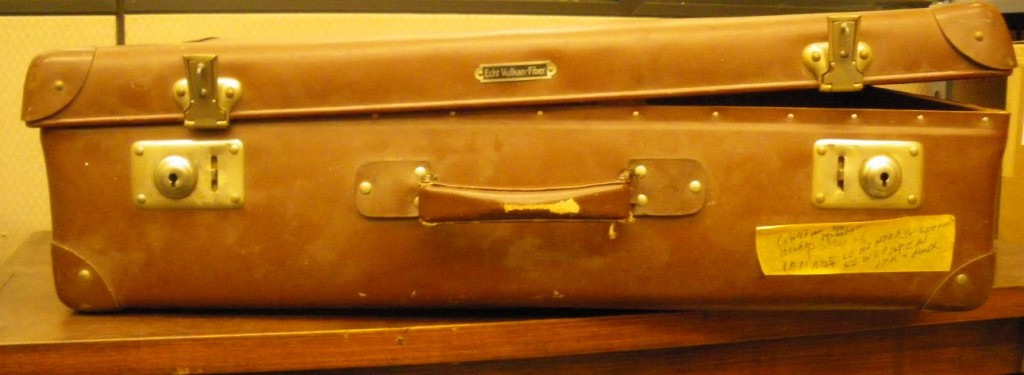In 1834, AAS librarian Christopher Columbus Baldwin wrote: “Some philosopher has said that his unhappiest moments were those spent in settling his tavern bills. But the happiest moments of my life are those employed in opening packages of books presented to the Library of the American Antiquarian Society. It gives me real, substantial, and unadulterated comfort. It is then that like glorious Tam O Shanter, I am ‘O’er the ills of life victorious.’”
I can report that 175 years later the source of Baldwin’s joy continues to give “real, substantial, and unadulterated comfort” to those of us who are fortunate enough to see what arrives daily for the AAS library.
The Acquisitions Table
The acquisitions department staff (Peg Lesinski, Sarah Barnard and Anne Hendrickson) and the curators (Vince Golden, Lauren Hewes, Laura Wasowicz, David Whitesell and myself) are all involved in various aspects of acquiring and processing material for the collections. We order from dealers via catalogs and quotes, we purchase at auction (including many items from eBay), and we receive gifts, sometimes unsolicited (more on that below) and sometimes after much work with potential donors.
On arrival all of these things land on the acquisitions table. It is an unassuming table, three and a half by eight feet. It is located in the acquisitions department, and it is on this table that each day’s arriving mail is first sorted, and packages from the post office and other carriers are brought to be opened. Frequently, its twenty-eight square feet aren’t sufficient to hold our newly received booty and it is a continuing challenge to the acquisitions department staff to keep up with new acquisitions and send them along for eventual cataloging, shelving, and use by readers.

The accompanying photograph shows the table as it was at 1:30 p.m. on Thursday, December 10. The piles of books in the background are 149 volumes just given to us by a university library. These are odd volumes, many of them parts of incomplete sets. It will be our job to check each volume against our holdings, and with luck we will add a number of things we don’t have, fill in gaps in broken sets, or identify variant bindings or copies in better condition than the ones we currently have. But before we do anything else, we need to vacuum them because they’re very dusty!
To the left of the front row is the manuscript account book of a gin distiller in Enfield, Massachusetts in the 1820s. Enfield no longer exists. It was one of the “Quabbin Towns” flooded in the late 1930s during the construction of the Quabbin Reservoir. Moving right we see a small tintype showing a rather cross looking baby girl; a partly printed 1859 certificate stating that an African American sailor named Aldridge Sanders is an American citizen; John Keegan’s new military history of the Civil War, and some recently received U.S. government documents (we are a depository library, in fact the first one to be so designated by Congress—in 1814).
Although much comes in, there is still plenty for us to seek out and acquire. We are omnivorous in our appetite for material printed in the United States before 1877—if we don’t already have it, we want it, and even if we do have it, we might want another copy if it is slightly different or in better condition than the one we have. We also add secondary materials to the collections to support research here.
Once in a while a gift arrives that we can’t really use, such as the suitcase that we found on our doorstep early one morning a few months ago. There was no name or note with it, and on opening it we found that it contained newspapers with stories about the JFK assassination and the first Moon landing. We’ll try to find a good home at another institution for the newspapers, although I’m less sanguine about the future of the suitcase.

Since you, dear reader, do not have the opportunity we do to stop by acquisitions and see what’s on the table today, we want to offer you a chance to experience some of the excitement we feel about newly acquired items. Every week or so Past is Present will highlight a recent arrival. Our curators will explain why each one is interesting and why we want it for our collections. I hope you will find these items as wonderful, interesting, and sometimes quirky as we do.

Great idea! As a former curator and long-time(since ’88)curatorial contractor to collection-holding institutions, I see this as an excellent way to involve your institution’s members, friends, and the public at large in the adventure of collecting, and the tasks involved in transforming donated items into useful
components of an institutional collection.